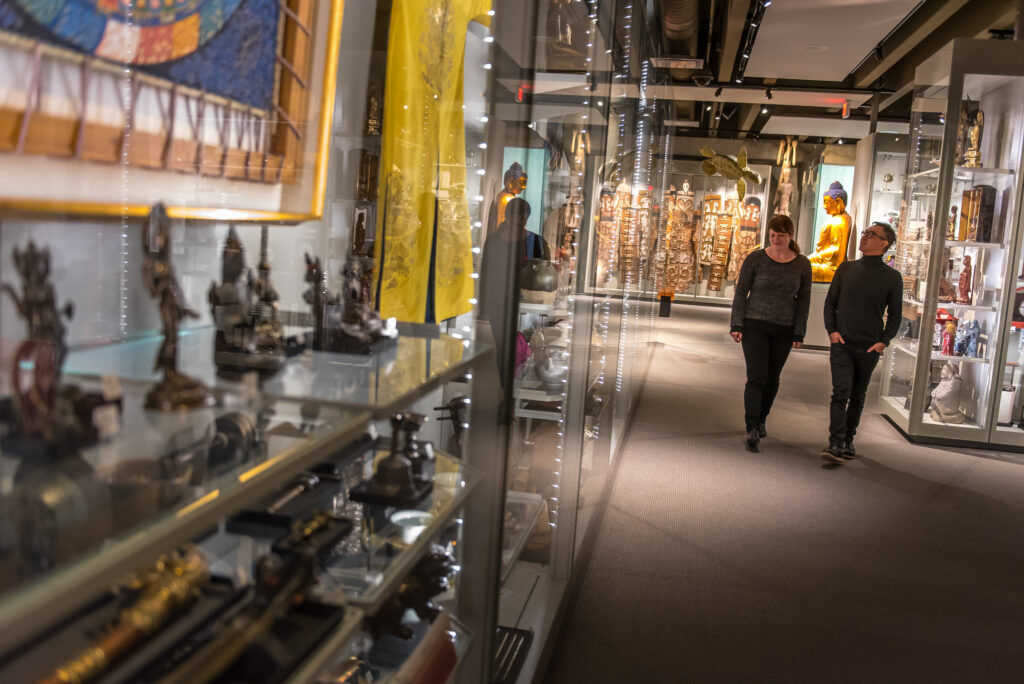UBC Point Grey is a vibrant, inclusive community located on the traditional, ancestral, and unceded territory of the Musqueam people. Beyond the university’s classrooms and lecture halls, UBC Point Grey is a hub of cultural diversity, offering a wealth of Indigenous influences, landmarks, and cultural experiences that invite the wider community to participate, learn, and engage. Honouring June as Indigenous History Month, we will explore the Indigenous landmarks and profound community connections that shape the beautiful place that is UBC Point Grey.
Indigenous History Month Community Events
Every June, a series of community events and activities commemorate Indigenous History Month at UBC Point Grey. Open to anyone who wishes to join, these events offer opportunities for learning, engagement, and celebration of Indigenous culture, traditions, and contributions. From workshops and performances to film screenings and panel discussions, Indigenous History Month at UBC Point Grey is a time to come together, listen, and learn from Indigenous voices. Explore this year’s events here.

Credit: Paul H. Joseph / UBC Brand & Marketing
There are a few more events in recognition of National Indigenous Peoples Day for learning and listening hosted by the University Neighbourhood’s Association at the Wesbrook Community Centre in the heart of Wesbrook Village. This year’s events include a film screening, workshop, and board game. Check out the details and register through the UNA’s website.
Indigenous Landmarks
As you explore UBC Point Grey, you will encounter many Indigenous public art installations and landmarks. The Reconciliation Pole, standing tall near Jim Taylor Park, commemorates the survivors and acknowledges the devastating legacy of the Indian Residential School system. Carved by Haida artist and residential school survivor James Hart, the pole serves as a powerful symbol of the tragic Indigenous history in Canada, encouraging dialogue and education surrounding it.

The Reconciliation Pole at UBC Point Grey. Credit: Hover Collective / UBC Brand & Marketing
Alongside the Reconciliation Pole, UBC Point Grey proudly showcases various other public Indigenous artworks, each telling its own unique narrative. From sculptures and murals to installations that blend tradition with contemporary expression, these art pieces provoke thought, spark conversations, and invite the community to reflect on Indigenous history, culture, and the path to reconciliation. Check out the public art map to visit a few of these installments.
Musqueam artist Brent Sparrow installed ten cast bronze pieces called ʔəlqsən (Point Grey) at the UBC Bus Exchange, adjacent to MacInnes Field. The term ʔəlqsən, derived from the hən̓q̓əmin̓əm̓ language, translates to ‘point of land,’ while “Point Grey” refers to a significant land point within Musqueam territory. Sparrow’s design features bronze-casted wood carvings depicting eagles, thunderbirds, and salmon. Check them out next time you’re hanging out at University Boulevard!
Musqueam street signs offer a bilingual experience while traversing UBC Point Grey. The chosen names correspond to the area’s geographical features — for instance, the term “middle” used for Main Mall signifies its central position in the community.
The Musqueam language, hən̓q̓əmin̓əm̓, employs a place-based directional system rooted in the land and water flow, such as upriver, downriver, inland, and towards the shore, rather than cardinal directions like north, south, east, and west.
Although currently closed for seismic upgrades and set to open end of 2023, the Museum of Anthropology (MOA) is a treasure trove of Indigenous art and artifacts. With its stunning architecture inspired by traditional Northwest Coast First Nations’ longhouses, MOA not only houses a vast collection but also provides a window into the rich cultural heritage of local Indigenous communities. Follow them on Instagram where Indigenous staff are taking over the Stories for the month of June, showcasing their unique perspectives on MOA collections.

Museum of Anthropology collections. Credit: Paul H. Joseph / UBC Brand & Marketing.
At UBC Point Grey, we’re lucky to be able to get involved and celebrate Indigenous cultures on our doorstep. It’s our collective responsibility to ensure that UBC Point Grey continues to be a place where Indigenous voices are amplified, traditions are honoured, and cultural exchange flourishes.
So, next time you find yourself strolling through UBC Point Grey, take a moment to soak in the Indigenous influences surrounding you. Pause and appreciate the stories woven into the land you’re walking on, and get inspired by the Indigenous influences shaping the incredible community of UBC Point Grey.



